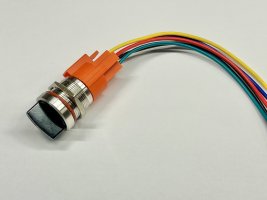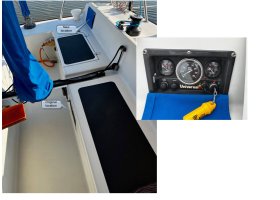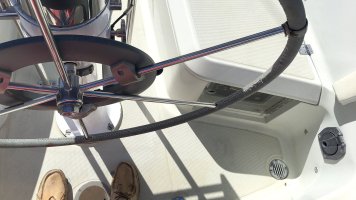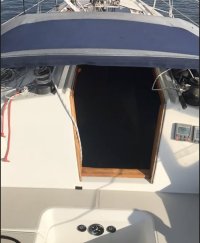Bolo
Contributing Partner
Looking for help from the more electronic savvy members. The original ignition switch (on my E32-3) was a key switch type. Because it's down near the deck and easily kicked or stepped on the key was bent a few times. So I switched (no pun intended) to a push pull type but I've sometimes found that the switch is pushed in when the engine was running, essentially turning the ignition off which I understand is not desirable when the diesel is running. So I found a rotary (non-key) switch on Amazon (which also has a LED light built into the knob) that I think will solve the problem of feet turning off the switch or damaging a key. (FYI - Since my existing setup is keyless and I can turn off all power to the engine panel by switching it off at a second battery switch inside the cabin. This and another battery switch, connected to the house batteries allows use of just the starter battery to start the engine or include all or just one of the house batteries. It's a bit much to cover here. These modifications were made by a previous owner and they work very well. In short, I can stop power to the engine panel so no one can start the boat without access to the inside of the cabin which would be locked up when I'm not there.)
Back to the new rotary switch. It's rated 220 volts at .5 amps. My question is, can this switch be used for an ignition switch at 12 volts? As far as I can figure the rating a 12 volts would be a little over 9 amps but then I'm "electronics challenged" sometimes and not sure if my calculations or ideas are correct.


Back to the new rotary switch. It's rated 220 volts at .5 amps. My question is, can this switch be used for an ignition switch at 12 volts? As far as I can figure the rating a 12 volts would be a little over 9 amps but then I'm "electronics challenged" sometimes and not sure if my calculations or ideas are correct.






